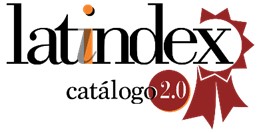Towards the construction of a mathematical identity through a reflective role-play in problem solving
DOI:
https://doi.org/10.48489/quadrante.32655Keywords:
role-playing, mathematical identity, narratives, cognitive roles, problem-solving instructionAbstract
In this paper we present the design of a role-play in problem-solving, aimed at promoting the construction of students’ mathematical identity. On one hand, there is a role-play on the cognitive functions identified as pivotal of the mathematical identity. On the other hand, there is a role-play concerning the group engagement: actors, who solve the problem; onlookers, who observe and take notes on how the cognitive roles are played by the actors. The double-level structure of actors and onlookers, implemented in a digital environment, allows the onlookers both to view in real-time the storytelling created by the actors do and to discuss it focusing on one cognitive role. All the students are required to fill-in a logbook, concerning their remarks on the cognitive role observed. We discuss the findings of a pilot, which involved 14-year-old students, and the mathematical identity emerged from the students’ logbooks, by analysing the cognitive roles as experienced and perceived by the students.
References
Albano, G., Coppola, C., & Dello Iacono, U. (2021). What does ‘Inside Out’ mean in problem solving?. For the Learning of Mathematics, 41(2), 32–36.
Albano, G., Dello Iacono, U., & Fiorentino, G. (2020). A technological storytelling approach to nurture mathematical argumentation. In H. C. Lane, S. Zvacek, & J. Uhomoibhi (Eds.), Proceedings of the 12th International Conference on Computer Supported Education (CSEDU 2020) (Vol. 1, pp. 420–427). https://doi.org/10.5220/0009416904200427
Bachtin, M. M. (1982). The dialogic imagination: Four essays. University of Texas Press.
Bartolini Bussi, M. G. (1996). Mathematical discussion and perspective drawing in primary school. Educational Studies in Mathematics, 31(1-2), 11–41. https://doi.org/10.1007/BF00143925
Darragh, L. (2016). Identity research in mathematics education. Educational Studies in Mathematics, 93(1), 19–33. https://doi.org/10.1007/s10649-016-9696-5
Davydov, V. V. (1990). Types of generalization in instruction: Logical and psychological problems in the structuring of school curricula. (J. Teller, trans.). The National Council of Teachers of Mathematics.
Engeström, Y. (1999). Expansive visibilization of work: An activity-theoretical perspective. Computer Supported Cooperative Work, 8, 63–93. https://doi.org/10.1023/A:1008648532192
Engeström, Y., & Sannino, A. (2010). Studies of expansive learning: Foundations, findings and future challenges. Educational Research Review, 5(1), 1–24. https://doi.org/10.1016/j.edurev.2009.12.002
Ferrari, P. L. (2004). Mathematical language and advanced mathematics learning. In M. J. Høines, & A. B. Fuglestad (Eds.), Proceedings of the 28th Conference of the International Group for the Psychology of Mathematics Education (Vol. 2, pp. 383–390). PME.
Ferrari, P. L. (2020). Educazione matematica, lingua, linguaggi. UTET Università.
Niss, M. (2003). Mathematical competencies and the learning of mathematics: The Danish KOM project. In A. Gagatsis, & S. Papastavridis (Eds.), 3rd Mediterranean Conference on Mathematical Education (pp. 116–124). Hellenic Mathematical Society.
Pierri, A. (2022). Digital interactive storytelling in mathematics: An engagement structure enriched by the Guru stimuli. In J. Hodgen, E. Geraniou, G. Bolondi, & F. Ferretti. (Eds.), Proceedings of the Twelfth Congress of the European Research Society in Mathematics Education (CERME12). Free University of Bozen-Bolzano and ERME. https://hal.science/hal-03745850
Mariotti, M. A. (2006). Proof and proving in mathematics education. In A. Gutiérrez, & P. Boero (Eds.), Handbook of Research on the Psychology of Mathematics Education: Past, present and future (pp. 173–204). Sense. https://doi.org/10.1163/9789087901127_008
Mellone, M., & Tortora, R. (2015) Ambiguity as a cognitive and didactic resource. In K. Krainer, & N. Vondrová (Eds.), Proceedings of the 9th Congress of the European Society for Research in Mathematics Education, (pp. 1434–1439). Charles University and ERME. https://hal.science/hal-01287686
Porter, B. (2004). Digitales: The art of telling digital stories. Bjpconsulting.
Radovic, D., Black, L., Williams, J., & Salas, C. E. (2018). Towards conceptual coherence in the research on mathematics learner identity: A systematic review of the literature. Educational Studies in Mathematics, 99, 21–42. https://doi.org/10.1007/s10649-018-9819-2
Sfard, A. (1998). On two metaphors of learning and the dangers of choosing just one. Educational Researcher, 27(2), 4–13. https://doi.org/10.2307/1176193
Sfard, A., & Prusak, A. (2005). Telling identities: In search of an analytic tool for investigating learning as a culturally shaped activity. Educational Researcher, 34(4), 14–22. https://doi.org/10.3102/0013189X034004014
Skinner, M. L. (1953). Science and human behavior. Macmillan.
Verschaffel, L., Greer, B., & De Corte, E. (2000). Making sense of word problems. Swets & Zeitlinger.
Vygotsky, L. S. (1986). Thought and language. (A. Kozulin, rev. ed.). The MIT Press.
Wenger, E. (1998). Communities of practice: Learning, meaning and identity. Cambridge University Press.











